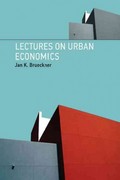Question
The demand for labor is Q=50-P and the supply curve of labor is perfect elastic P=20. Assume that there are no externalities or pre-existing market
The demand for labor is Q=50-P and the supply curve of labor is perfect elastic P=20. Assume that there are no externalities or pre-existing market distortions. The government decides to raise revenue for some projects by taxing firms 2 dollars for every labor they hired.
a) (3 points) Graph the supply and demand curves and indicate how the curves shift after implementation of the tax. Show in the figure the price paid by consumers and the price received by producers after the tax. Label social surplus before and after the tax, deadweight loss (DWL), and tax revenue.
b) (2 points) Calculate the tax incidence of the tax and deadweight loss.
c) (2 points) Check your answer of tax burden and deadweight loss (DWL) by using the formulas with elasticity. (Note, to use the formulas, you first have to calculate the elasticity of supply and demand).
d) (2 points) Go back to the case that the tax in levied on firm. Suppose the project is health insurance, and workers have a full valuation of the health insurance, that is workers value of the health insurance is the same as the cost of the health insurance. Indicate the tax incidence and DWL in this case.
e) (2 points) Now ignore the benefit associated with the tax. Suppose the government needs to raise more revenue. They can choose to raise more tax on labor, on capital that is a substitute for labor, on watching movie, which is one kind of leisure, or on chocolate, which is assumed to be independent with working. Which one is the most efficient?
f) (3 points) Now suppose the government choose to levy tax on chocolate. Treat labor and chocolate as two irrelevant goods. Assume the supply of chocolate is also perfectly elastic. The demand elasticity is -1. If the price of chocolate is $2, what does the Ramsey Rule suggest is the optimal commodity unit tax on chocolate?
g) (3 points) Go back to the case that firms need to pay the labor tax and no benefit is associated. Think about the general equilibrium effect of the tax on firm. Who bear the tax in the short run, labor (workers) or capital (firm)? How about the long-run? How are other markets affected?
f) (3 points). Suppose now workers need to pay the tax and no benefit is associated. Draw budget constraint on the diagram of leisure and other consumption. Illustrate how the labor tax changes the budget constraint. How the tax affects labor supply?
Step by Step Solution
There are 3 Steps involved in it
Step: 1

Get Instant Access to Expert-Tailored Solutions
See step-by-step solutions with expert insights and AI powered tools for academic success
Step: 2

Step: 3

Ace Your Homework with AI
Get the answers you need in no time with our AI-driven, step-by-step assistance
Get Started


